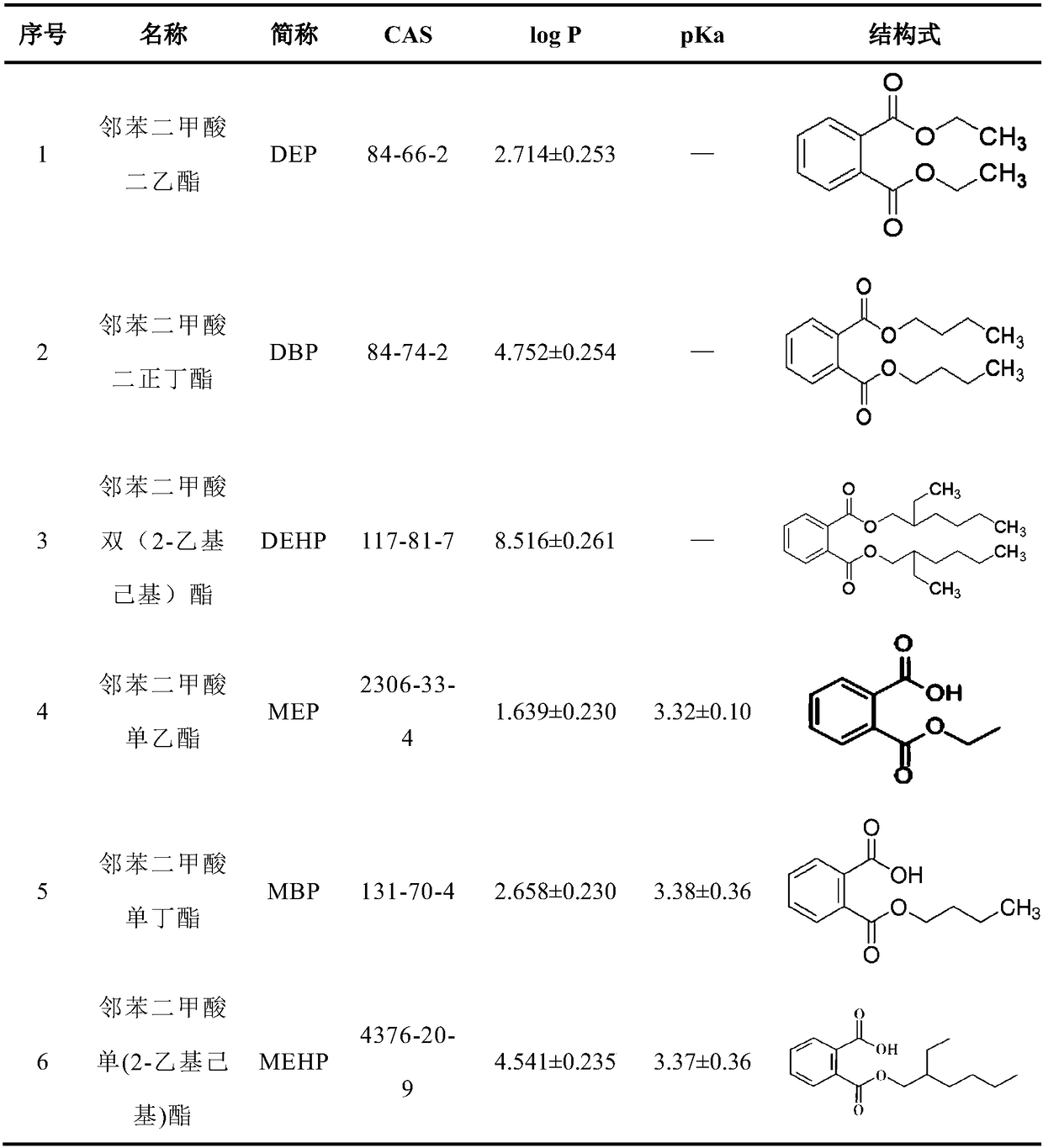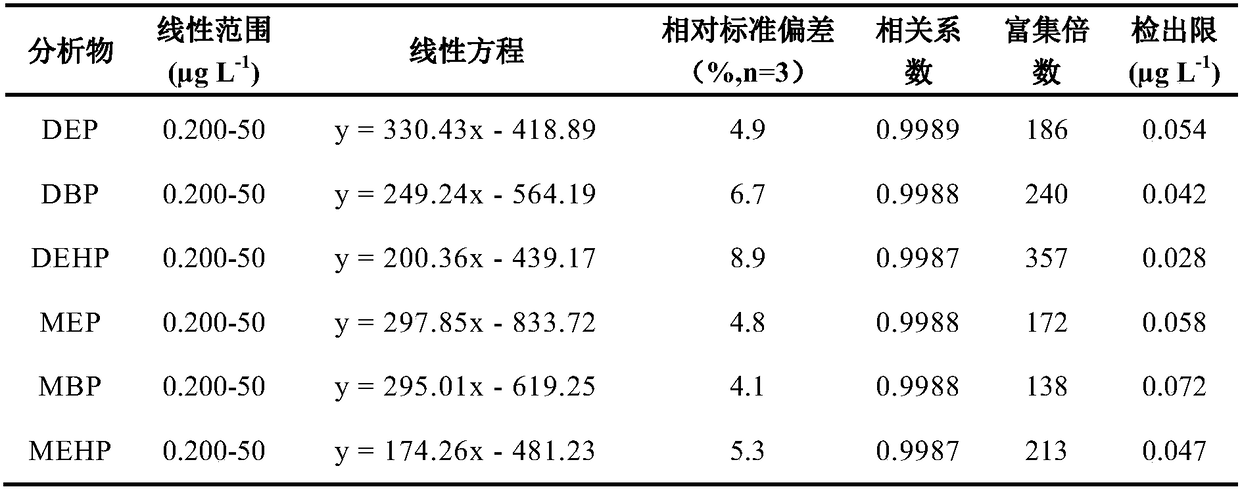Detection method of phthalates and degradation products in environmental water samples
A technology of phthalic acid monoester and phthalic acid, which is applied in the field of water environment quality detection and analysis, can solve the problems of difficult treatment, secondary pollution of the environment, complex matrix, etc., and achieve large enrichment multiples and high extraction efficiency , the effect of using less
- Summary
- Abstract
- Description
- Claims
- Application Information
AI Technical Summary
Problems solved by technology
Method used
Image
Examples
Embodiment 1
[0028] Standard solution adopts national standard substance preparation, selects diethyl phthalate, di-n-butyl phthalate, bis(2- There are 6 kinds of ethylhexyl) ester, monoethyl phthalate, monobutyl phthalate, and mono(2-ethylhexyl) phthalate. First prepare a 1g / L stock solution with methanol, take 100μl each of the six standard stock solutions in a 10mL volumetric flask, dilute to 10ml with methanol, and prepare a mixed standard solution. The concentration of each target pollutant is 10mg / L. L.
[0029] In order to verify the separation effect of high performance liquid chromatography, the above mixed standard solution was taken for HPLC analysis. The liquid chromatograph used in the test is the Breeze2 liquid chromatographic system of Waters Company in the United States, 1525 binary pump, 2707 automatic sampler, 2489 ultraviolet / visible detector; Eclipse XDB-C18 liquid chromatographic separation column, 150mm × 4.6mm, granular Diameter 5μm; column temperature 30℃; injecti...
Embodiment 2
[0031]Standard solution adopts national standard substance preparation, selects diethyl phthalate, di-n-butyl phthalate, bis(2- There are 6 kinds of ethylhexyl) ester, monoethyl phthalate, monobutyl phthalate, and mono(2-ethylhexyl) phthalate. First prepare a 1g / L stock solution with methanol, take 100μl each of the six standard stock solutions in a 10mL volumetric flask, dilute to 10ml with methanol, and prepare a mixed standard solution. The concentration of each target pollutant is 10mg / L. L.
[0032] In order to obtain the standard curve of the six target pollutants, the above 10 mg / L mixed standard solution was diluted with ultrapure water into a series of simulated polluted water samples (0.1-100 μg / L) with different concentrations.
[0033] Take a 12cm-long polypropylene hollow fiber (inner diameter 280 μm, wall thickness 50 μm, pore diameter 0.1 μm, porosity 60%), place it in acetone for ultrasonic cleaning to remove surface impurities, and dry it for later use; mm, ...
Embodiment 3
[0041] The established method was used to enrich and detect phthalates and their degradation products in two kinds of environmental water samples, namely tap water in the laboratory and river water in the Zhenjiang section of the Beijing-Hangzhou Grand Canal.
[0042] Take a 12cm-long polypropylene hollow fiber (inner diameter 280 μm, wall thickness 50 μm, pore diameter 0.1 μm, porosity 60%), place it in acetone for ultrasonic cleaning to remove surface impurities, and dry it for later use; mm, length 8mm, syringe volume 0.5mL) inject ultrapure water (adjust the pH value to 10 with NaOH) as the receiving phase into the cavity of the hollow fiber; Hexafluorophosphate, 1-hexyl-3-methylimidazolium hexafluorophosphate, and 1-octyl-3-methylimidazolium hexafluorophosphate are mixed in a volume ratio of 1:1:1), and ultrasonically oscillated for 30 Seconds, a liquid film is formed in the micropores of the hollow fiber membrane wall; the ionic liquid remaining on the surface of the fib...
PUM
| Property | Measurement | Unit |
|---|---|---|
| thickness | aaaaa | aaaaa |
| pore size | aaaaa | aaaaa |
| length | aaaaa | aaaaa |
Abstract
Description
Claims
Application Information
 Login to View More
Login to View More - R&D
- Intellectual Property
- Life Sciences
- Materials
- Tech Scout
- Unparalleled Data Quality
- Higher Quality Content
- 60% Fewer Hallucinations
Browse by: Latest US Patents, China's latest patents, Technical Efficacy Thesaurus, Application Domain, Technology Topic, Popular Technical Reports.
© 2025 PatSnap. All rights reserved.Legal|Privacy policy|Modern Slavery Act Transparency Statement|Sitemap|About US| Contact US: help@patsnap.com



